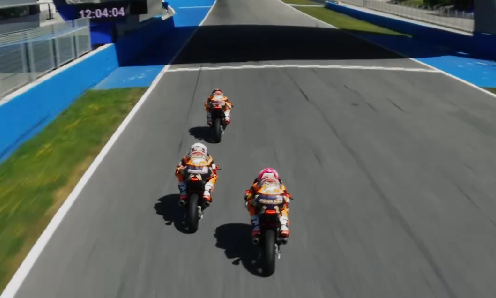Four Things We Learned from the MotoGP Americas Grand Prix
The 2024 MotoGP Americas Grand Prix was the most exciting race the series has produced at the Texan track. Here’s four things we learned last weekend

The Circuit of the Americas has hardly been known for producing excellent MotoGP races since it made its first appearance on the calendar in 2013.
Perhaps much of the dullness of the Grands Prix of the Americas to have taken place there has been down to the dominance of that other MotoGP first-timer of 11 years ago: Marc Marquez.
Marquez won on every occasion MotoGP visited Texas until 2019 when an engine braking glitch on his Honda RC213V caused him to crash from a comfortable lead at turn 12. It looked at one point as though Marquez would return to the top step of the COTA podium last Sunday, but another braking issue caused him to crash. This was only one of countless moments that made 2024’s the best Grand Prix of the Americas in MotoGP history.
Vinales (finally) has what he needs
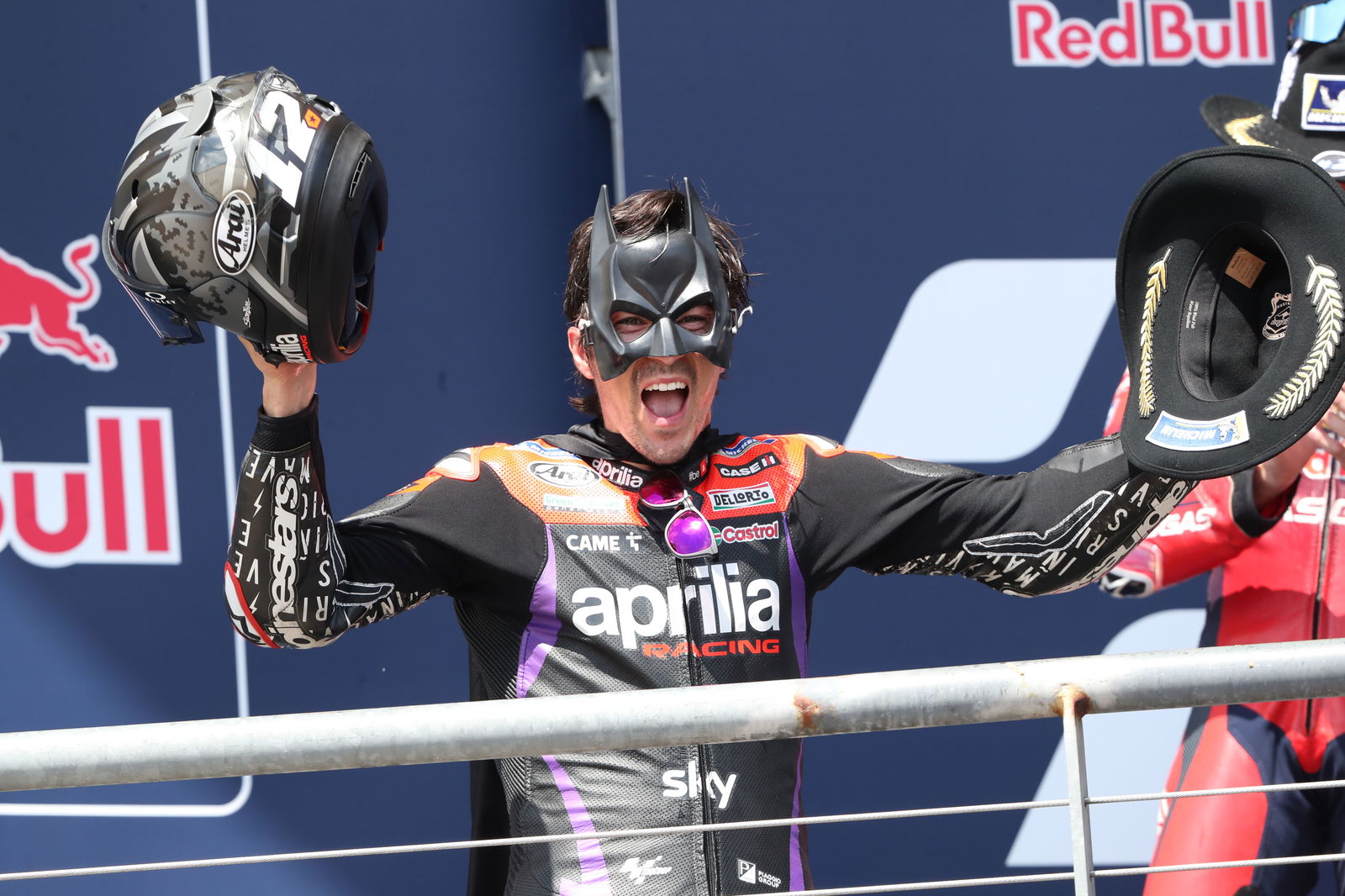
In Marquez’ stead, Maverick Vinales won last Sunday to become the first rider to win MotoGP races for three different brands, three weeks after he won his first race for a third brand (Aprilia, after Yamaha and Suzuki). Which makes total sense.
Vinales used a new clutch system from Aprilia at the weekend that uses a switch on the handlebar to change the lever on the left bar from a clutch lever to a rear brake lever. From the outside, it seems overly complicated, but on Saturday it worked perfectly and Vinales made the holeshot, and led lights-to-flag for his second Sprint win in a row.
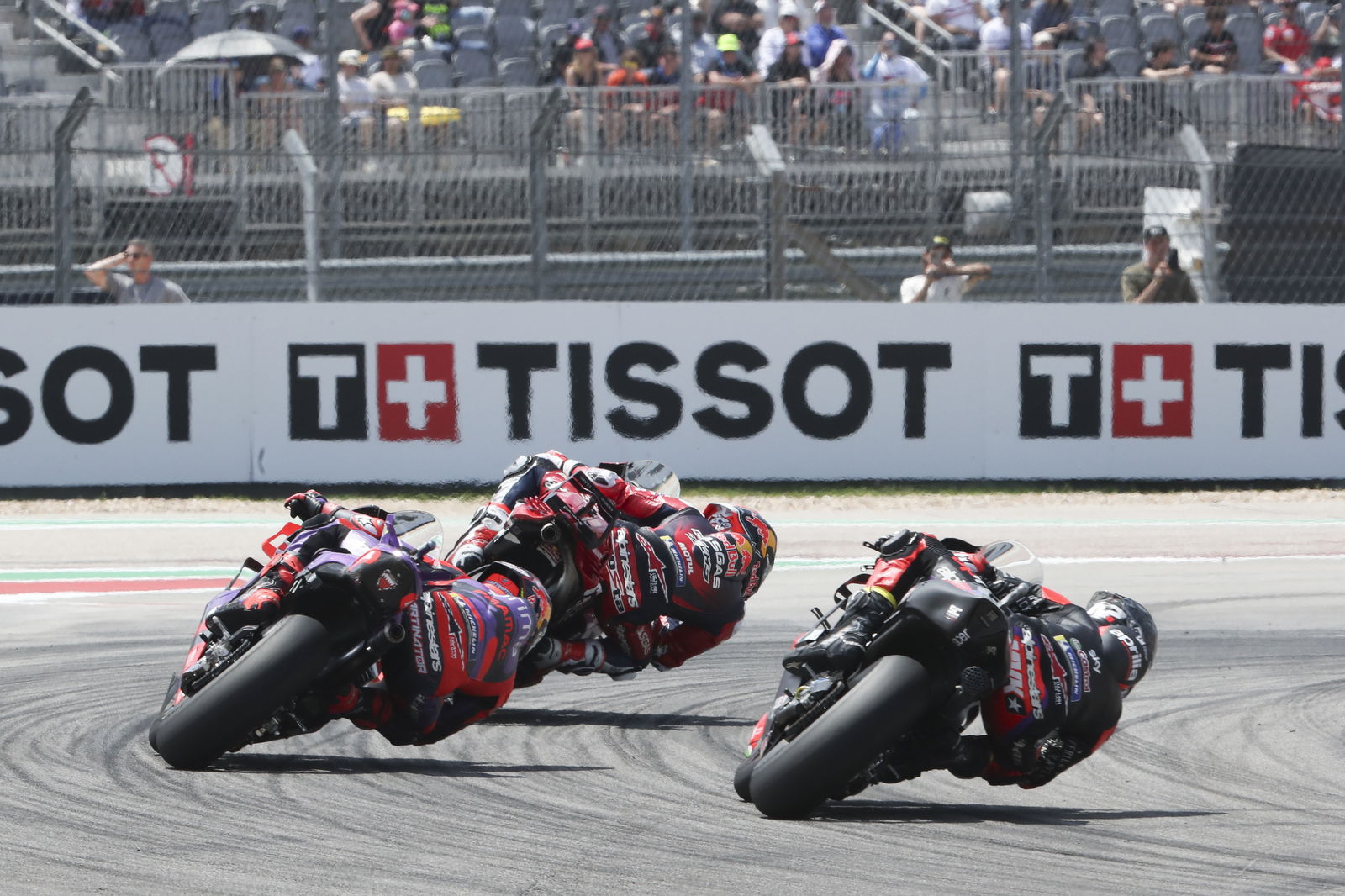
On Sunday, it didn’t work as well, and Vinales entered turn one mid-pack. He was even more mid-pack after he was caught on the outside of a Bagnaia-Martin battle in the first turn that pushed him off-track on the exit.
But Vinales’ poor start on Sunday allowed him to show two of the weapons he possesses this year: speed, and an ability to pass. Vinales’ potency in a battle has never been among the strongest on the grid, but he scythed through 10 riders in 10 laps last week, and you can’t do that if you can’t pass.
Sure, Vinales had picked the right tyre, the medium, which many ahead of him hadn’t, but he still had to cut through them. Plus, one of the other riders to choose the medium rear was Pedro Acosta, the ‘final boss’ in Vinales’ comeback epic. He dispatched Acosta, and then kept him at about a second’s distance for the final laps of the race, displaying that speed and consistency. It was possibly the best race of Vinales’ MotoGP career (Qatar 2021 might raise its hand) and it came precisely when no one was expecting it to.
Acosta is one of ‘the boys’
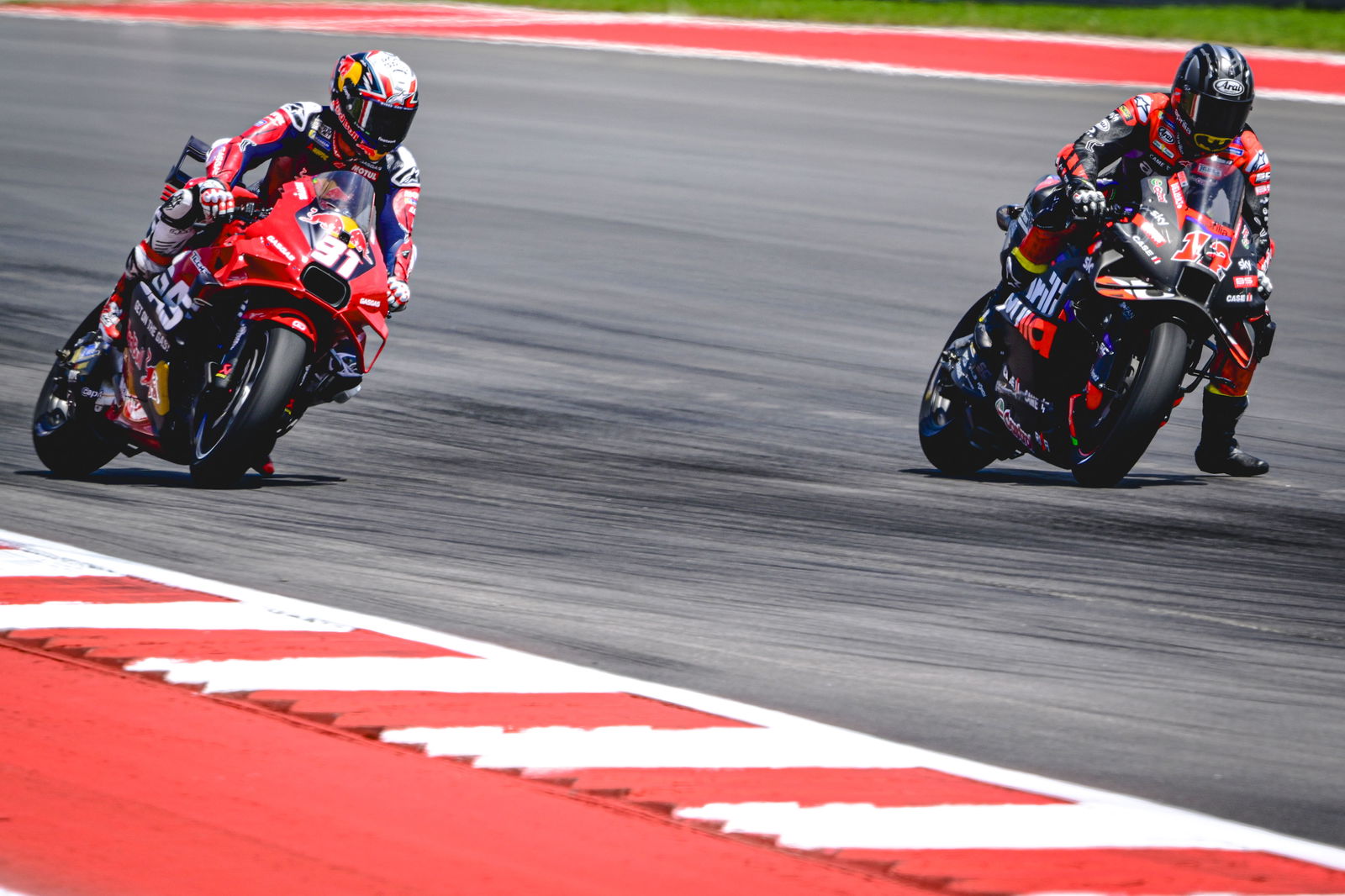
Pedro Acosta would have been the star of the show for the third race in three had it not been for Vinales’ attendance.
After the race, the 19-year-old talked about his pleasure at being able to fight with the mid-20s-to-early-30s opponents he called “the boys,” but after only three races in MotoGP Acosta is emerging as one of the main guys of the series. Already KTM’s top rider in the championship, the Austrian brand is likely quickly forgetting about the commitment it made to Brad Binder in the middle of last year, because Acosta, in the future, has the potential to become the guy rather than just another.
Ducati isn’t perfect
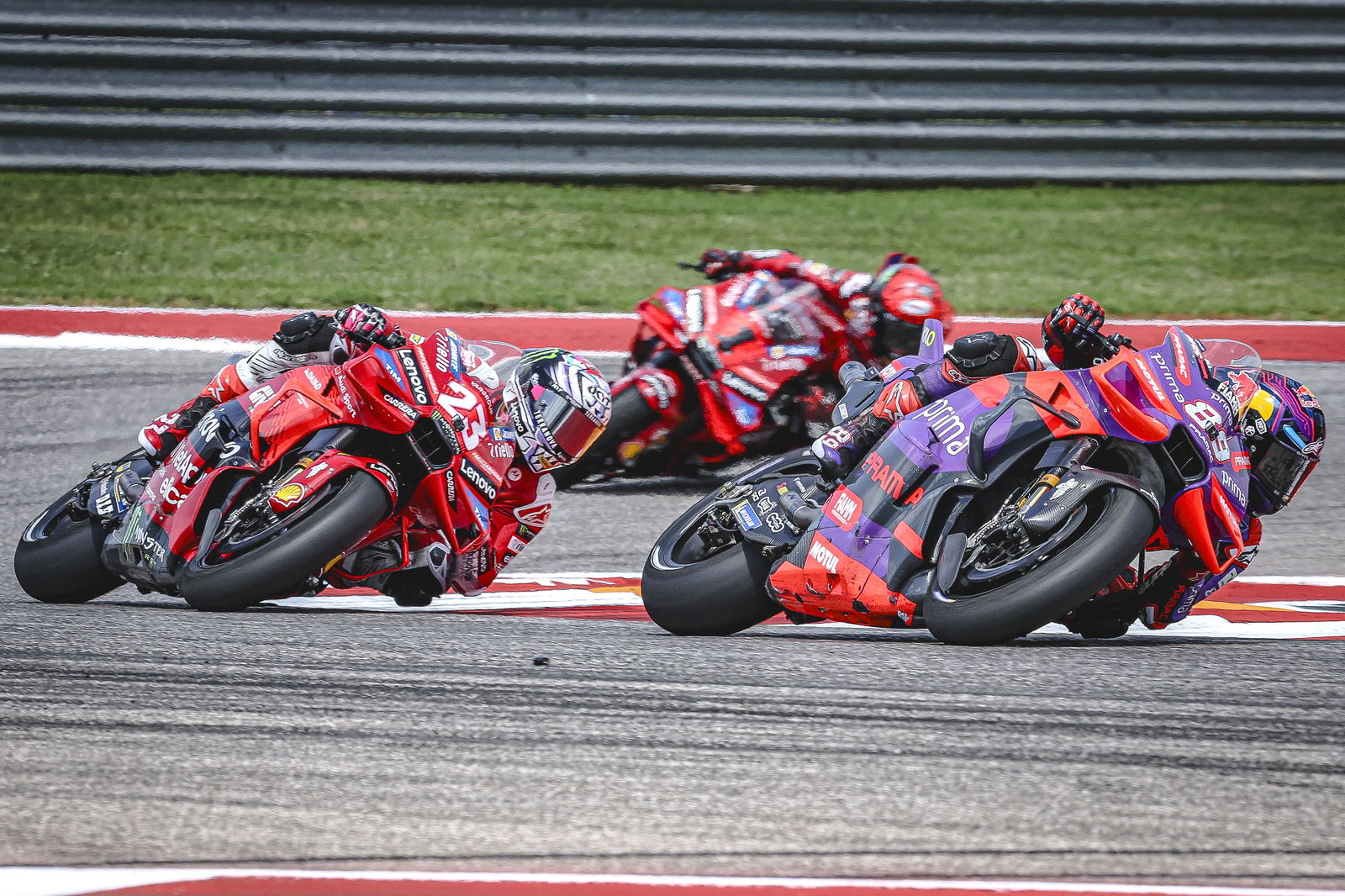
The 2024 MotoGP preseason suggested that Ducati will dominate again. KTM was close, and Aprilia not much further, but the speed possessed by Francesco Bagnaia in Sepang and Qatar meant he had won the title before it had event started. Supposedly.
Well, apparently not. Sure, Jorge Martin is leading the championship by 21 points over Enea Bastianini, but rear vibrations, or chatter, that seems to appear most often for Ducati when its Desmosedici has a soft-compound rear tyre fitted, means that things aren’t currently perfect in Bologna.
So far, Martin is the rider to understand and manage the situation the best overall, although it’s notable that his sole GP win this year came at the Portuguese Grand Prix where he used the medium.
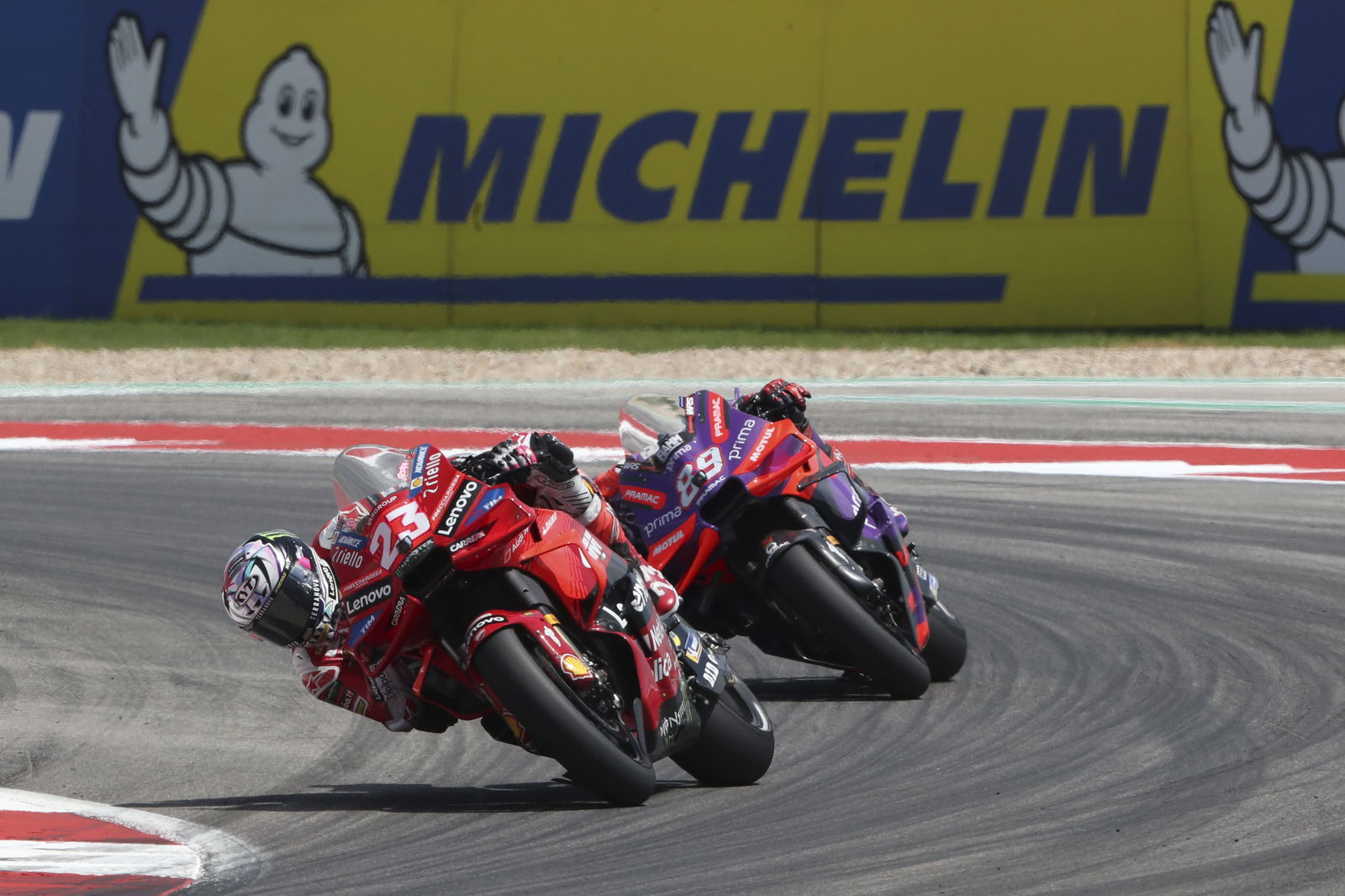
In Texas, Bastianini managed best to finish third, having dropped back in the middle of the race, while Francesco Bagnaia began to struggle from lap six and finished fifth, meaning he has only one podium finish this season: his win in Qatar, where vibrations weren’t an issue for him.
After the Texas race, Bagnaia said that the situation now is like in 2022, when he struggled at the start of the season. Two years ago, Bagnaia won the fifth round, the Spanish Grand Prix, by effectively aero-blocking Fabio Quartararo for the whole distance, and then fixed his problems with the Desmosedici GP22 the day after in the official Jerez test.
With Spain next up, and with an official test scheduled for the day after once again, the four days MotoGP spends in Andalusia at the end of the month could prove pivotal to the season, and particularly to the title credentials of Bagnaia, who is already 30 points behind Martin.
Good races are still possible

Ducati’s issues, Acosta’s brilliance, and Vinales’ comeback all made for an excellent MotoGP race at the Circuit of the Americas. Four different riders - Acosta, Martin, Marquez, and Vinales - led the race. This came after a lights-to-flag win in the Sprint the day before that was representative of the racing MotoGP had seen until that point.
After the Sprint in the US, the only lead change to happen after the first lap of a race in MotoGP this year had happened when Bagnaia went off-track in the middle of the Portuguese Sprint.
Given all the dull racing we’ve endured, it had started to feel inevitable. The Grand Prix of the Americas, though, was MotoGP more or less at its best, and proof that good racing is still possible in the age of downforce aerodynamics and ride height devices.
There were a few reasons for that.
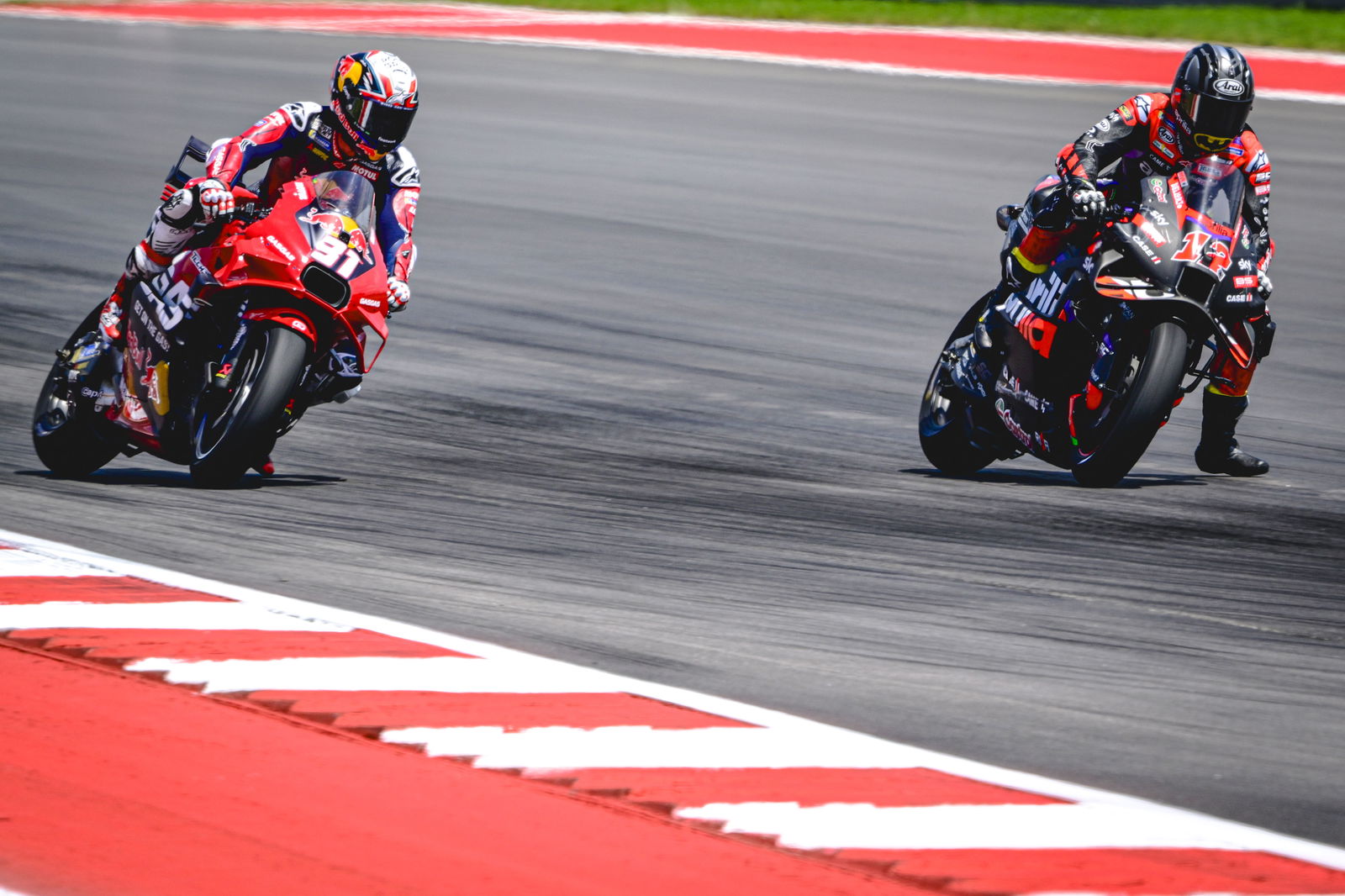
Firstly, if Vinales had started on Sunday as he did on Saturday, the Grand Prix would have been as much a non-event as the Sprint.
Second, for once there was a split in tyre choice, with the Ducati riders choosing the soft, and others choosing the medium. This meant that the soft-compound runners were trying to manage the pace to conserve tyre life, while those with the medium were able to be more aggressive: nobody in the race was more aggressive than Acosta or Vinales, and yet they arrived at the end of the race with more grip than anyone else.
Thirdly, the track layout is diverse enough to allow the riders to use the different strengths of their different packages: the high-energy Martin was exceptional in the left-to-right first sector; Acosta was particularly strong in the final part of the hard braking zones at turns 1, 11, 12, and 20; and Vinales was able to make use of the Aprilia’s ground effect fairing through the triple-right-hander of turns 16, 17, and 18.
All of that meant there was enough parity for the riders to be able to manufacture passing opportunities, which simply wasn’t the case in either Lusail or Portimao.
Will this be the case in Jerez? Only time will tell.
Find all the latest MotoGP news on Visordown.

